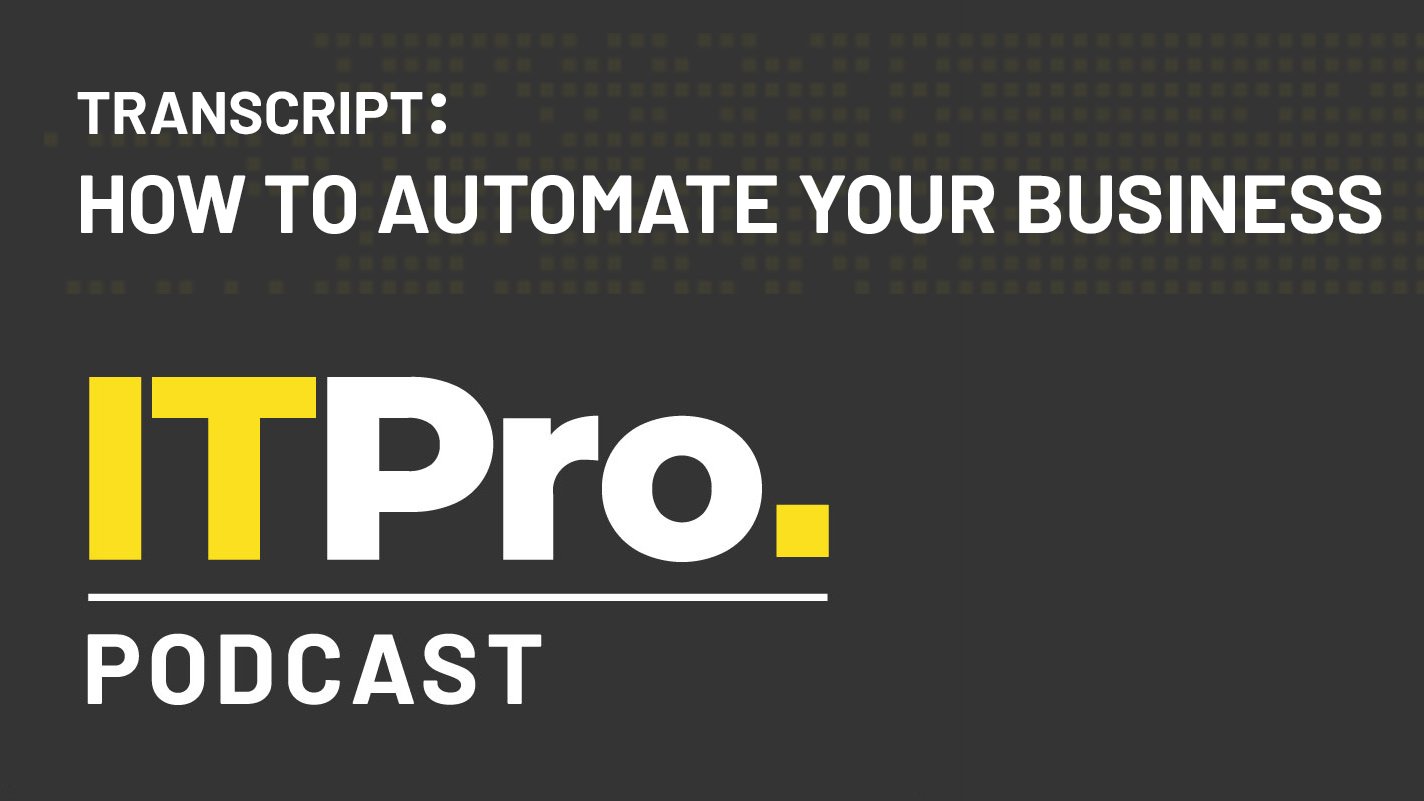
This automatically-generated transcript is taken from the IT Pro Podcast episode ‘How to automate your business'. To listen to the full episode, click here. We apologise for any errors.
Adam Shepherd
Hello, I'm Adam Shepherd.
Zach Marzouk
And I'm Zach Marzouk.
Adam
And on this week's episode of the IT Pro Podcast, we're diving into the field of business process automation.
Zach
BPA isn't strictly a new technology, but over the last several years it's developed at an unprecedented pace. It's now sophisticated enough to be deployed in delicate information driven tasks like logistics, healthcare, and even finance.
Adam
The purpose of BPA is to remove human staff from repetitive manual tasks and hand them over to automated software, allowing employees to focus on more creative or customer facing jobs instead. When deployed correctly, this can increase efficiency enormously, and we're joined today by Paul McFarlane, CTO of Glasgow Credit Union, to discuss the process efficiency gains that his organisation has achieved through BPA. Paul, thanks for coming on the show.
Paul McFarlane
You're welcome. Pleasure.
Sign up today and you will receive a free copy of our Future Focus 2025 report - the leading guidance on AI, cybersecurity and other IT challenges as per 700+ senior executives
Adam
So Paul, can you tell us a little bit about Glasgow Credit Union?
Paul
It might be best to explain a little bit about what a credit union is; I think a lot of people have some preconceptions as to what a credit union is - often wrong. It's essentially a cyclical business model. So it's a savings and loans business. It's designed to provide affordable source of credit to members, you need to be a member in order to join and borrow and save with us. We're not, we're not a poor man's bank, which is what people tend to think we are, we're not just there for financial exclusion, we are very much mainstream, at least, Glasgow Credit Union is a mainstream organisation. And we can provide services, certainly in terms of lending and savings, that can rival high street, better rates, et cetera. So so that's why we exist, it's a discrete group of members that have a particular bond together so for us, they either live or work within the Glasgow area. And they get together in order to save and then borrow from the same pot of money, from the same savings that's come in. Glasgow is quite different from the rest of the credit union sector. We're the largest in the UK, by quite a mile. In fact, we make up about 5% of the overall credit union industry in the UK. But it's still still a relatively small business, we're an SME with about 35 employees. But we've got a reasonable turnover but it's, it's a large business, to the extent that our asset size is approaching 200 million. So it's big numbers, lots of transactions that's going through, but it's still a very small footprint in terms of financial services, you know, tiny compared to banks and some building societies.
Zach
You've invested in BPA to speed up some of your internal processes. Were there any pain points in particular that you're trying to solve?
Paul
Yes, so we were trying to deliver some strategic growth within the the organisation. We had, we always want to lend more, we always want to grow our organisation. But we also had to reduce operational pressures in order to achieve that. There were a lot of bottlenecks within our business processes. If you think about what the business processes are for our organisation, we've got people who join us to become members, we then have to set up a savings account for them, we then have to set up a direct debit or a contribution for them, because the idea is that you save or you contribute regularly to your credit union account. So for most people that's either via direct debit, but we also have partnerships with local employers, and so you can save directly from salary. So it's like a salary deduction. And so there's various integrations with different kind of processes. And historically, that was all done manually, it was quite paper based processes, you had to fill in a form and it's a wet signature that was required. And, you know, so it was stripping back some of those processes, which was quite a challenge because you're trying to engage with other third party organisations, some of the employer partners that were sometimes reluctant to to walk away from those paper processes and making sure we were able to integrate with some of what what they were doing. But our processes were also reliant on people and our legacy systems, you know, weren't the best; our back office platform was designed for another time, it was written as an old VB6 application and while it served as well, you know, there's no shame for it, it didn't cost a lot of money to build and we've had 20 odd years out of it, so we can't complain about it, but it's, you know, it's exceeded its life. So we had to start thinking about what we do to complement that, and start to roll back some of those, some of the reliance on that platform. So we made the decision to look at process automation, because we simply couldn't continue to, to grow our business. Without making those kind of investments. Up until I joined the business in 2010, and kind of over the last 10 years, we've quadrupled in size and gone from a 50 million business in 2010, to just shy of 200 million today. And that's through process automation, because the strategy was very much people driven up until that point. And as we grew the number of members and the number of transactions, we added more and more employees, and you know, it's grown over the 20 or so years it was in existence up until that point, and that just wasn't feasible anymore, we didn't have the space, we were going to have to move into bigger premises, people are expensive, it's, you know.
Adam
And past a certain point they don't scale, right?
Paul
Exactly. That's that's exactly the point. And so, investing in process automation enabled us to achieve some of those economies of scale. But the pain points we had with deploying the process automation was we were not an IT focused business, we were not technically literate as a business; we had systems had been in place for a long time. And we we didn't have the capacity, or indeed the resources at the time, to start developing and start, you know, building interfaces and API's that would sit, sit in front of our existing back office. So we looked externally, and how to look externally to various different platforms, platforms like Laserfiche and Experian and different things that we could we could bring in to achieve some of those process automations that were, you know, they've got interfaces that sit within the software that they have that non technical, certainly non developers, can drag and drop into workflows to create smart workflows that can automate routine mundane processes. And it starts to free up your resources then to focus on other, on other tasks.
Adam
So you've gone for Laserfiche for your business process automation. For anyone who's not familiar, could you give a brief overview of how business process automation works in practice?
Paul
Laserfiche is quite unique, or we found it unique at the time, because it enabled us to automate a lot of our business processes through a user interface, a quite an easy to use user interface, that was able to drag and drop lots of different processes to make up various workflows. So, I can give you an example of how we use it, we deployed Laserfiche to automate the the documentation processes and the fulfilment of our loans. So when you think about the customer journey that you go through when you're when you're applying for credit. So you apply for your loan, you get a credit check, sitting behind that credit check is a series of decisions. So we used a different piece of software from Experian that enabled us to configure that decision engine to make a decision on the loan in an automated way. And if it wasn't able to, we weren't just simply chucking it away, we then handed it off to one of our underwriters to make a manual decision on that. Once that's done, we need to create a document. And that's where Laserfiche comes in. So that helps us create the, either the paper document for old school members that don't want to sign anything digitally. Or we were able to produce the document, an electronic document that can email a link to the customer to say, great, your loan has been accepted, click here to sign. Once that is digitally signed, the document comes back into our, back onto our network, drops into a network folder and through the workflow within Laserfiche, we've programmed that to pick up that document, scan it through into Laserfiche document retention software. So we're able to then hold the document for the, you have to keep it for seven years plus the the term of the loans, as a regulatory requirement. So we can set those retention periods on those documents as part of that workflow as well. So none of that's having to be done manually. So if it's a five year loan, we need to keep that for five plus seven years. So when those 12 years turn around, historically, we would have had people then going and trying to fish out those documents and destroy them manually. So all that's done for us now as part of this this process. Once that document's been archived, it's able to read the document, make sure it's been signed, all the fields are completed, it checks against the metadata that's attached to the document to match that back to our back office, our SQL database. To make sure no one's interfered with it, it's still a £5,000 loan or whatever. And it's not been it's not been doctored or anything. And then we can take that through our workflow to a documents return stage, which means it's ready for payout. And then we have other off the shelf software that then picks that up, and floats it through the back system to pay the customer through a faster payment. So in theory, if it's an automated decision, in theory, you can join us and apply to borrow, get a decision - If you sign your documents electronically, quite quickly, we can have the money in your bank within 15 minutes from from start to finish.
Adam
Wow.
Paul
Which is, you know, it's better than what some high street banks are offering. But there wasn't a lot of development. And when we we moved from non kind of IT-facing business, we were very much centred on customer facing, we had a contact centre and a back office, quite a large back office team of administrators, which we've kind of scaled back. And we brought in IT resources. And then we've got some some developers, but they weren't developing the process automation back then, they were developing the front-end, the self service for the customers, the mobile app that the customer uses to then interface with those back office tasks and process automation. So we were able to deploy a lot of the the process automation without being a coder, without having to develop anything. A lot of it was drag and drop. Yeah, the UI.
Adam
Yeah, that whole kind of low code, no code trend is something that that is really great for being able to stand up stuff quickly, without necessarily having a kind of huge demand on IT resource.
Paul
Definitely. And it was the way forward for us. I mean, as I say, we were a small business. And we, it was our first kind of foray into automation in a big way that was transformative within the business. So being able to do it through that low code, no code way, as you say, meant we were able to do it without spending big, without completely changing our resource needs, our headcount, and so on which, you know, going back a few years before this kind of stuff came on the market, that's what we'd have been looking at for that kind of, that kind of technology. So all of a sudden, this kind of technology is available to small businesses like us, to then rival bigger businesses and larger banks and building societies and put us on an equal footing with them.
Zach
Could you give us an insight into how long it took to implement BPA in the workplace? Like what was the timeline?
Paul
The timeline for us was was about three months. So we probably could have done that a lot quicker, the three month timeline was because we had to build a lot of front end stuff. So there's a lot of bespoke front end application forms and different things that we built. The actual business process automation, and configuring the workflows is really simplistic, and that can be deployed quite quickly. I'd suggest a number of days. If you weren't putting customised front ends on it to enable self-serving different things for customers. So ours was quite bespoke, which is what took the time. But yeah, Laserfiche is quite, it's quite an intuitive piece of software that you can, you can log in, because we've made changes to it, we've learned lessons as we've moved on, and we've made some changes to the to the workflows. And that's so easy as well, because you're not having to crack open the bonnet and you know, go in and get a developer and to start re-coding things and, and changing things. It's all drag and drop and plug and play. So you're just reconfiguring the workflow as you go.
Zach
And what kind of benefits have you seen from this BPA rollout?
Paul
There's been significant benefits as part of the process automation. It has helped us grow, which was the overall objective, and we've grown without any increase in headcount. It's not a revolution for the business, it's been an evolution over a period of years. And our headcount has more or less remain static for 12 years, despite the fact we've grown from 50 million, as I say, to 200 million. And so I think that's quite an achievement. And we've achieved that through process automation. So we are starting to see some of those economies of scale and making investments in something like Laserfiche, or some of the other process automation tools out there, has enabled us to make a spend once or have a small ongoing spend for maintenance, but it's much cheaper than resources. But that doesn't mean we've, you know, we've lost headcount, or we've just redeployed them. So we brought in a number of developers now, so our headcount's changed, it's a much more skilled headcount. Rather than having kind of semi skilled manual administration tasks, that's now transferred to much more contact centre roles. So we've redeployed people, we've had some natural attrition as well. So we've been quite lucky, it might be different if you're in a much larger organisation, if you've got a contact centre with thousands of people in it, or a, you know, massive batch processing centre, that that's going to look slightly different from what from what we had, but for a small business like us, we were able to achieve it without a lot of pain. But you know, there are still challenges, nobody likes change. People in contact centres, our administrators, it was difficult, but we got there. And they've embraced it, and they've embraced their new way of working. And it was the only way to do it, because it just wasn't feasible to keep doubling, you know, bringing in another underwriter and another couple of contact centre advisors, because you had to speak to somebody for a loan, you had to physically have something posted to you, you had to physically sign it, post it back; it took weeks. And just in, you know, 2010, 2012, 15, that's not how you do things. So, and the demand from our customers was to modernise, and we had to do something to keep us relevant for those customers, so it was definitely the right thing for us to do.
Adam
So on that kind of change management piece, I guess, was there much convincing that you had to do at a board level to try and get this project over the line? Because as you said, it's a fairly substantial departure from the sounds of it, compared to what you were doing before. Was there any resistance or was it quite easy?
Paul
It wasn't easy, though nothing's easy, trying to, trying to get a board decision. But there wasn't resistance as such, there was...
Adam
Caution, let's say.
Paul
Yeah, there was an element of caution around not running before we can walk and making sure we, we know what we're doing and tentatively taking those steps and that's that's what we did. We're never first to market with anything; I don't think that's a conscious decision. But we sometimes wait and see how things pan out before we will deploy certain technologies or certain new products or whatever. So we're never first to market, we let others make those mistakes. And we will, you know, we'll, we'll learn from those mistakes and hopefully follow and get it right. But we can often get it right first time, which is how we've succeeded even before all the automation, that that's just the kind of mantra that our business has always had.
Adam
I think that's quite common in the financial services market, in particular. It's something we saw a lot around the rise of cloud, it took a good few years into cloud computing's kind of maturity before financial services organisations were kind of ready to make that jump.
Paul
Definitely. No, absolutely. But in terms of, you know, our business is quite forward looking. We, we're not scared to make decisions where, where we need to, we always put our members first, but we do it in a, we try and do it in a smart and almost caring way that that looks after everything. So because of the nature of our business, we're not, our shareholders are our members, we are owned by our members. So they're first and centre, always in everything that we do, but our people, our members too, our employees are a part of our business. So I think if we weren't able to demonstrate that we were able to redeploy, and retrain and re, you know, reuse people, and still have the same opportunities for people, it might have been a slightly different story, because we, we wouldn't just, you know, chuck people out and be uncaring and un, you know, make those those kind of negative decisions on people. And our members certainly wouldn't want that either. So being able to deploy in the way we did, that was able to, it was probably the right time for us to do it, because we were the right size. And we were able to then grow without spending more and recruiting more. But at the same time, we were looking after the people that we had, whilst given opportunities to others, in kind of development roles and technology roles as well.
Zach
Has your use of Process Automation evolve beyond what you originally planned?
Paul
No, I don't think it has, I think we are certainly, I always had the vision to have a fully automated, fully unattended operation. I come from a financial services background. And there already was a lot of automation and a lot of, still a lot of manual tasks being done. But there was a lot of automation already in play within the industry that I worked in. So it was a bit of a culture shock when I, when I came to the credit union and saw some of the things that you know, were still being done, as if it was, you know, 1970s, 1980s. But there, but that's just the way of the world. That's that's, that's what happened. And it was a small business, a really small business back then. And so I always had a vision to take it forward and achieve what we've, what we've since achieved, because we've taken it further forward beyond the the lending side of things, that's the kind of first big one that we did, and that the best kind of use case to to explain the concept. So I always had the vision. However, I think it's I think we've deployed it, and we've developed those, or developed that process automation, in a different way from how I envisaged that that happening. The journey that we've been on over that period has certainly taken us a lot longer than it would have taken us if I had been in a in a bank or, you know, with the resources at my disposal, huge project teams and everything you have, although sometimes the governance around that slows, slows things down in getting decisions made. But and there's pros and cons with a small business. But no, I think the vision was always there. But we we've gone about it slightly differently from how I first thought we'd have started this.
Adam
How so?
Paul
Just the fact, I think the fact that we've done it ourselves. I envisaged going out to a partner company to build us a whole new back office and chuck everything out and replace it and you know, modernise the whole, the whole piece which is not how we've done it; it's much more fragmented and much more of an evolution rather than revolution. So we still have our VB6 application, we still use it for some things, but we're not relying on it anymore. It's still the centre of our business, the SQL database is still the centre. But we've gone out and bought third party applications like Laserfiche, that's then complimented everything we've got. So we've got a much more complicated kind of set of applications and much more complicated infrastructure now than we did have, because the VB6 application was a credit union in a box that was designed to plug and play and run a credit union business, but it wasn't externally facing, it wasn't able to talk to the outside world, and deal with self serve applications. Certainly, it's a dumb system. It's not designed for any kind of automation. So bolting everything around that and complementing it in a much more modular way, is how we've done it, which is not what I thought we would do, way back when we we started this. But then when you saw how easy it was to deploy the Laserfiche solution to put in play the process automation for for loans, when you start to complement that with Experian for credit decisioning, which again, was off the shelf plug and play, and has a UI that you can go in and design your credit risk strategy to say if a customer says this, then this is the route to take. If a customer says this, then this, you know, go down a different path in terms of credit risk strategy, which lets us automate the lending decisions, which lets us automate identity checking for customers as part of the onboarding application. We've also got an off the shelf package that enables us to interface with the BACS system for direct debit collection, which takes all the paper away from that and automates a lot of those processes, starting to sew those things together with our developers, and then integrate it into other interfaces that sit in front of our old back office application, integrate into our database, integrate into self serve applications, just joins all the dots up to give us quite a clever enterprise level platform. But it's not, you know, we've not bought it from a large enterprise level organisation; it's lots of little components that we've sewn together to make it work for us, which is much more cost effective probably. And lets us achieve kind of the bespoke solution that we need.
Zach
Has that modular approach that you mentioned made your IT easier to manage in a way?
Paul
Possibly. It's, it's not easier to manage, it was easier to manage when we didn't have any, way back at the start, because we engage with a number of outsource partners that look after our network, we're not large enough to have all the specialisms to run the network and the telephony and the cybersecurity and everything. So we've got a number of partners that we work with that give us those skill sets around around our business.
Adam
We love the partner community.
Paul
Yeah, and we've certainly retained that. And they're great because they're working with other bigger businesses than you and they can share experience and they can almost, they can sometimes signpost you to other other technologies and help you grow and help you, you know, they've got a lot of horizon scanning going on that just we wouldn't have as a business.
Adam
Yeah, exactly.
Paul
So that's critical to our success and where some of our ideas have come from and where some of our other partnerships have come from. But it's much more complicated now because we've we've got in house applications that we are supporting with our developers and our own IT team that's then engaging with those, those third party organisations and the partners. And so it's a hybrid approach that we have. So it's more complicated, but it's arguably better for the business. It'd be much easier if we just had one partner that looked after the, you know, the entire application, which is what it was 10, 15 years ago, with that credit union in a box, it just didn't really do much for the business and it wasn't fit for the business anymore. But if anything went wrong with it or you wanted to change it, you just put in a change request to that organisation, you paid for it. And it happened. Sometimes, you know, you'd be in a queue for something to happen, which is the negative aspect of that; if we want to make a change to our applications today, it's in our gift to do that. If it takes us ages, that's our fault. Because we're in control of our own destiny, you know, we're in control of our own, our change control process sets internally, we're not relying on on one external partner that's running our application. We can... it's much more controlled and with the process automation tools that we have, with the drag and drop stuff, if it's relatively low level changes, we can just log in into the workflow. Some of it's quite simplistic, there's there's no coding involved. It's almost looking like a Visio flowchart and you just go in and drag and drop, and process A then becomes stage three instead of stage one or whatever, or you change the location where it's to point to, or, you know, whatever you're trying to do - it's a lot more simpler than having to make a request to an external, go through a six month change process, get all signed off, get it queued, and everything you need to do before for that happens.
Zach
Could you remind us what year you implemented this technology?
Paul
We, the lending technology was put in in 2017. So, so yeah, we we made the decision in 2017 that we just couldn't maintain the manual nature of what we were doing anymore, and we'd got to a size where it was just not feasible to keep going down that path. And that's when we we embarked on that. So part of the successes, we've doubled our lending as part of it, and I think that's that was twofold. One, we were able to, so we had capacity restrictions on us that we knew we could only lend so much up until that point. And so we were able to, to double the new lending business pretty much overnight after we deployed that. But I also think the fact that we made we, removed the barriers to lending as part of as well. So it was cumbersome to take a loan from us. It was time consuming. You had to wait two weeks to get your money. So everything's instant these days, everybody wants everything now. You know, it's almost like adding Prime membership to our lending process that you can get it same-day. So that's that's what we delivered here. And I think that kind of USP, certainly a USP within the credit union sector, but even with some banks, you have to wait days for the process to come through. Some of them still insist on you sending payslips in, sending in bank statements or whatever. So we stripped all that back and digitised everything, which is a bit of a USP, and the customer journey was just made so slick as part of that. And I think that's helped us to, to achieve the growth.
Adam
So do you have any plans for further automation?
Paul
Yes, and one of the next projects we're looking at is to achieve the same level of automation across our mortgage business, so we we're one of the only credit unions that lend in the mortgage space. And we were a unique lender, because it's a high loan to value. So it tends to be for first time buyers that would be excluded from from the property ladder because they just don't have a deposit where we're one of the only lenders that do 100% mortgages, for example. And so it's quite a unique niche market that we're in for mortgages. And and many of you know that there's, in the UK, there's a requirement to take advice from a mortgage advisor when you when you apply for a mortgage. So you sometimes need half a day, a day off your work to go and sit in front of a mortgage advisor to get through the various questions and everything you need to do. But there's a lot of paper and a lot of, certainly for us, there's a lot of off-system processes and documentation and everything that needs to be completed. And I think there's an opportunity for us to improve that. So there'll still be there face to face - well, with COVID It's all done, it's not done face to face anymore. It's all, you know, teams calls and Skype calls, et cetera, that we have with our customers - but there'll still be that face to face element of speaking to someone to take the mortgage and get the advice and do everything you need to do. But all the documentation and the fulfilment of everything and pulling the survey together and all the underwriting and everything that goes with that, I think there's an opportunity to automate that and deploy similar technology that we've got. But for a different use case. To enable the customer to self serve to onboard them into the process. Drop in our face to face element and then use a process automation to to back that up with quite a slick fulfilment process.
Zach
You said you implemented this in 2017? Do you think that having process automation in place helped your business address any challenges that came about during the pandemic?
Paul
Yes, definitely. When the pandemic hit, we made the decision to close our office and allow everyone to work from home. And that wasn't a requirement. We were classed as essential services. So like banks and building societies, we could have remained open. But we had challenges with social distancing. We were never going to be able to achieve it in the size of office that we've got. So it was the right decision for us to close and everybody worked from home. We, because of the process automation and, and the almost paperless environment that we had created within the office as a result of this, we were able to continue to operate pretty much business as usual. And with no downtime we finished, in fact I think it was a Monday night. It was the night Boris made his announcement that, you know, what was going to happen in lockdown, the first lockdown was going to hit and everything. So it was that Monday night, we closed the office. And then we opened business as usual the next morning with everybody working from home with with a seamless transition and no interruption and no impact to customers. And I actually think the impact of the pandemic on us has been a positive one in terms of the technology because I think our customers have embraced technology much more now. Because they've had to, we had some members that just would not consider paperless, would not consider using the mobile app, still insist on coming to see us. But all of a sudden, we're not there to have face to face and you can't walk into our office and speak to someone the way you have done for the last 15 years. Because that just doesn't exist anymore because og COVID, because the world suddenly changed. So our customers were forced down the road of engaging with new technology. And that's been a positive step. And most of them have been quite complimentary about the technology. They're not scared of it anymore. And they almost needed that little push to to get them into it.
Adam
Well, I'm afraid that's all for this week's show. But thanks once again to Glasgow Credit Union CTO Paul McFarlane for joining us.
Zach
You can find links to everything we spoken about today in the show notes and even more on our website, itpro.co.uk
Adam
Don't forget to subscribe to our social media and YouTube channel for more great content and leave the podcast a rating and a review.
Zach
We'll be back next week with more analysis from the world of IT, but until then, goodbye.
Adam
Bye.
ITPro is a global business technology website providing the latest news, analysis, and business insight for IT decision-makers. Whether it's cyber security, cloud computing, IT infrastructure, or business strategy, we aim to equip leaders with the data they need to make informed IT investments.
For regular updates delivered to your inbox and social feeds, be sure to sign up to our daily newsletter and follow on us LinkedIn and Twitter.
-
 The six biggest security challenges coming in 2026
The six biggest security challenges coming in 2026In-depth What will be the main challenges businesses face in 2026 and what can they do to prepare?
-
 Channel focus: All you need to know about Microsoft's partner program
Channel focus: All you need to know about Microsoft's partner programChannel Focus The veteran OS developer and vendor continues to advance its strategy, particularly in Azure cloud solutions and AI
-
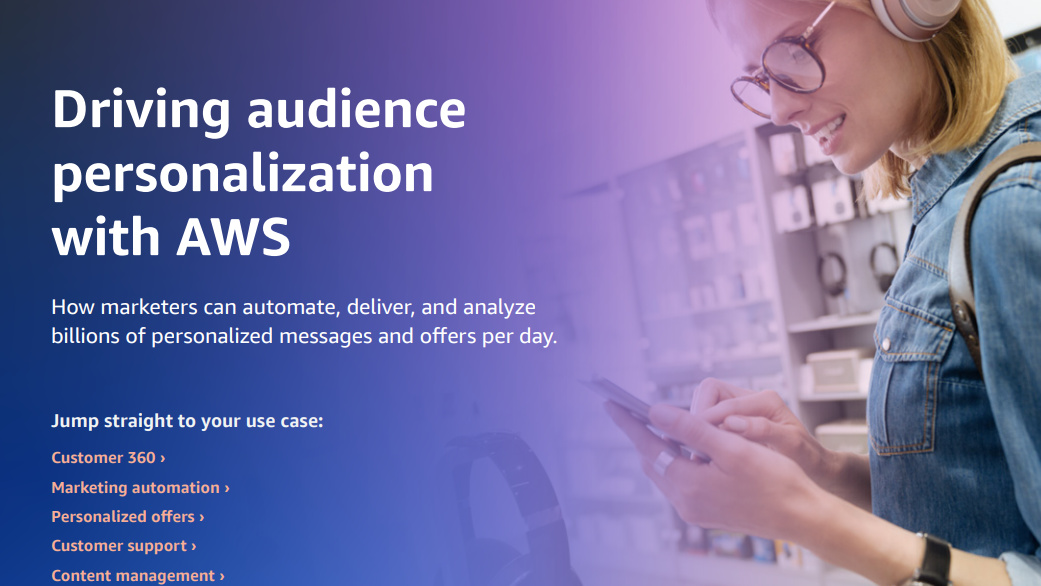 Automate personalization with AWS
Automate personalization with AWSWhitepaper How marketers can automate, deliver, and analyze billions of personalized messages and offers per day
-
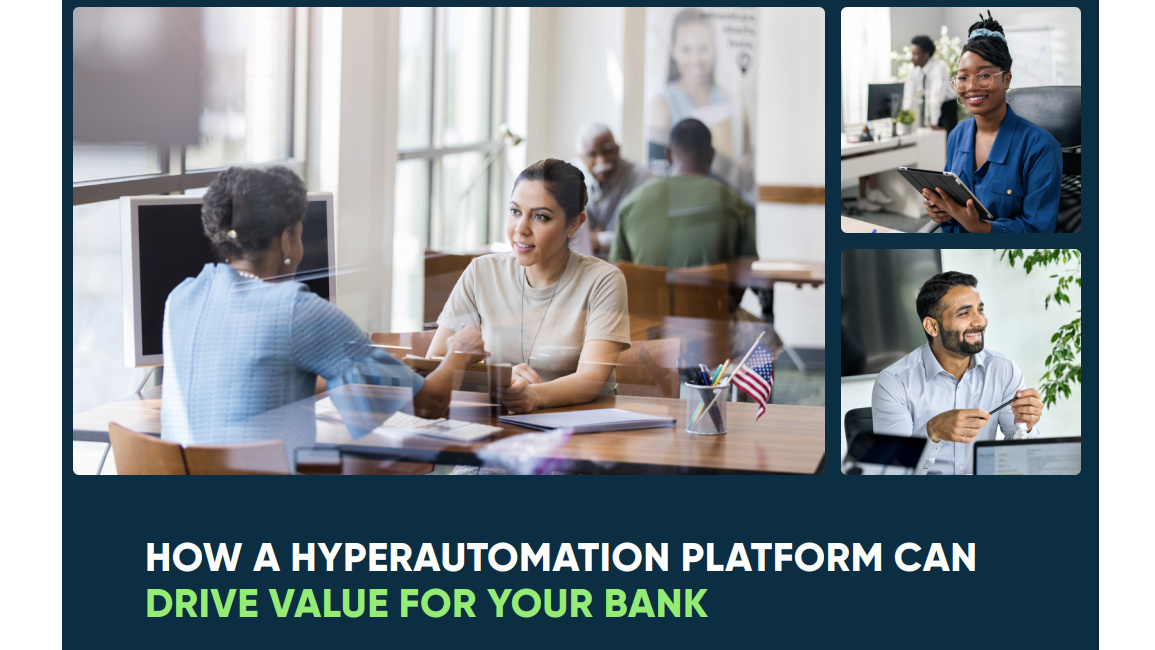 How a hyper-automation platform can drive value for your bank
How a hyper-automation platform can drive value for your bankWhitepaper Five ways automated processes can drive revenue and growth
-
 Appian wants to be the AI company for AI skeptics
Appian wants to be the AI company for AI skepticsAnalysis The firm outlines its AI strategy at Appian World 2023 while using ChatGPT and Midjourney to create scripts and imagery for keynote presentations
-
 Workday hit with claims its AI hiring systems are discriminatory
Workday hit with claims its AI hiring systems are discriminatoryNews An African American plaintiff has alleged that Workday's systems prevented him from being hired on the basis of his race, age, and mental health
-
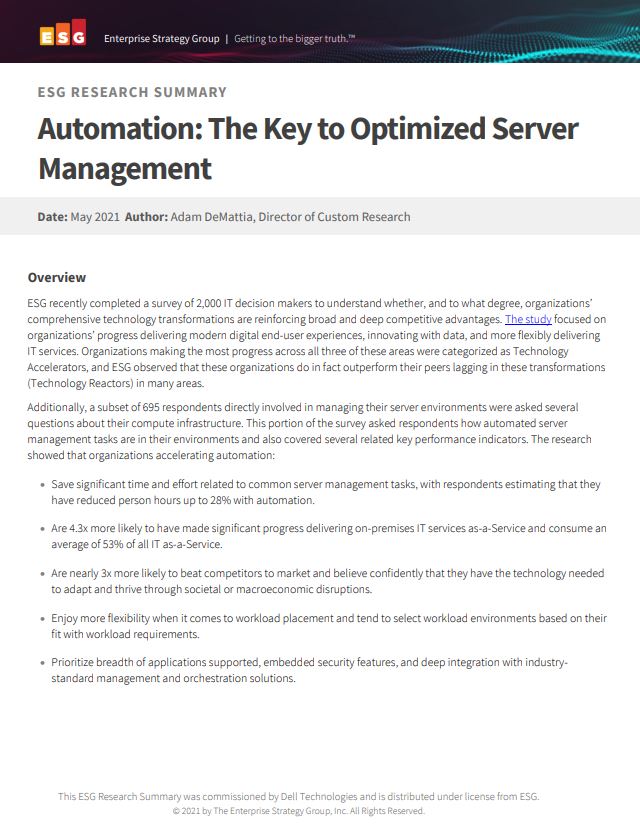 Automation: The key to optimised server management
Automation: The key to optimised server managementWhitepaper Deliver modern digital end-user experiences, innovate with data, and more flexibly deliver IT services
-
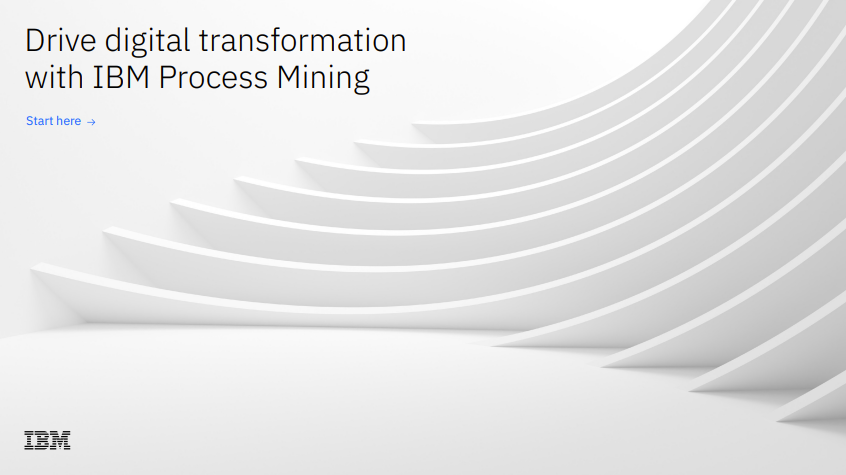 Drive digital transformation with IBM process mining
Drive digital transformation with IBM process miningWhitepaper A process discovery, analysis and monitoring technique to help businesses succeed throughout the entire DX journey
-
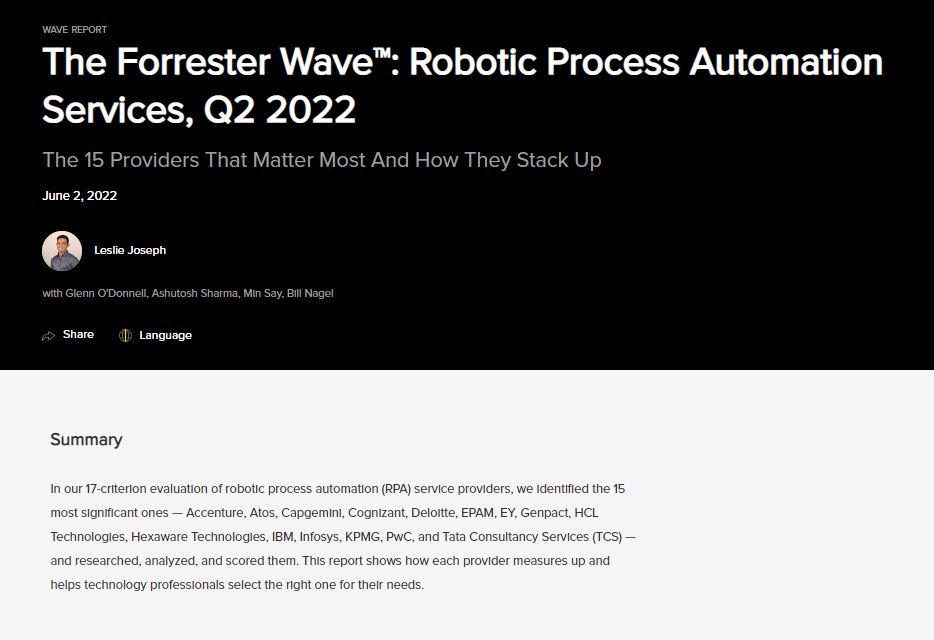 The Forrester Wave™: Robotic Process Automation Services
The Forrester Wave™: Robotic Process Automation ServicesWhitepaper The 15 providers that matter most and how they stack up
-
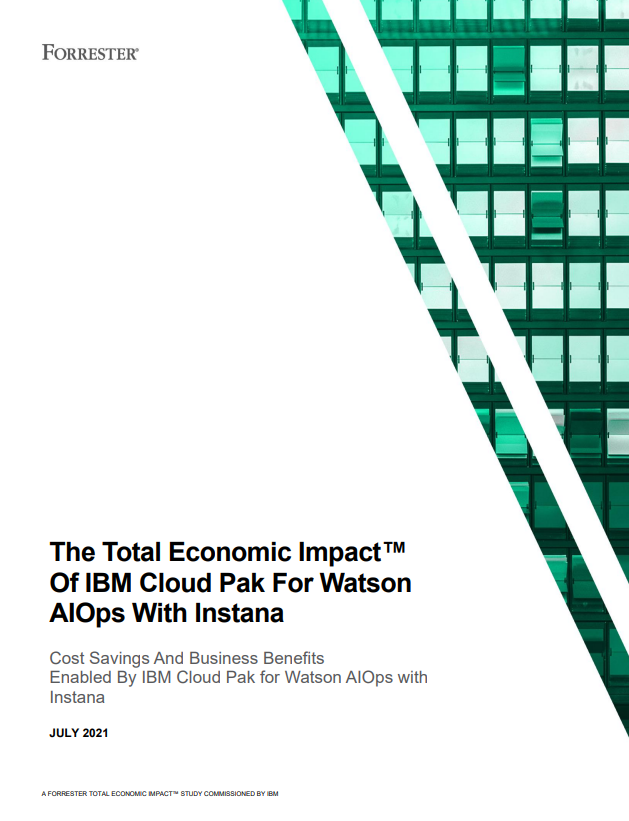 The Total Economic Impact™ of IBM Cloud Pak® for Watson AIOps with Instana
The Total Economic Impact™ of IBM Cloud Pak® for Watson AIOps with InstanaWhitepaper Cost savings and business benefits

